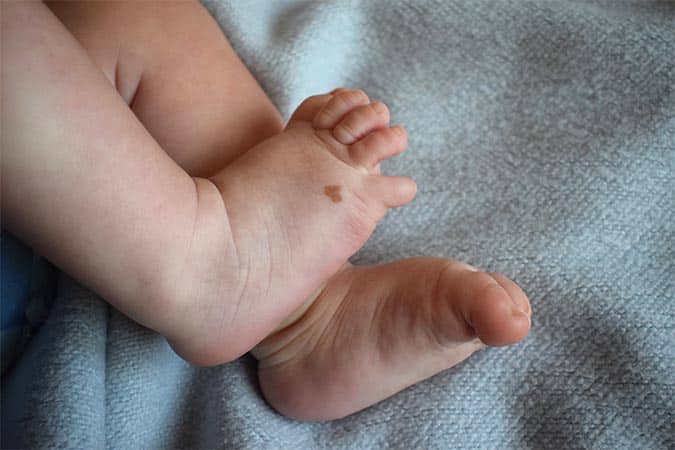What are Atypical Nevi?
Nevi are also known as moles. Atypical nevi, also known as dysplastic nevi, are moles that are that have usual features in how they appear and how they look when biopsied, but are noncancerous. Sometimes atypical nevi evolve into melanoma. Having atypical moles may also be a risk factor for developing melanoma in other skin sites. Atypical nevi are very common in children and tend to run in families.
Common signs of atypical nevi include:
- Tan to deep brown color.
- May have an irregular shape with undefined borders.
- May resemble a “fried egg”
- Are often larger in size than normal moles.
If your child has atypical moles, it is important that you perform a skin check on them, or if they are old enough, they can assist in performing their own skin check. Children and adults with atypical nevi should also visit a dermatologist annually for a professional skin check. During a skin exam, be sure to pay attention to areas of the skin that are exposed to the sun often, such as the face, hands, legs, arms, chest, and back. To determine if a mole looks unnatural, follow the ABCDEs.
Asymmetry: If one half of the mole looks different than the other half.
Border: If the edges of the mole appear jagged, blurred, or irregular.
Color: If the mole has many colors inside of it, including tan, brown, black, blue, red, or white.
Diameter: If the diameter of the mole is larger than the size of a pencil eraser (6mm).
Evolution: If the mole changes significantly over time.
Who is a Good Candidate for Atypical Nevi Treatment?
If your child has any moles that show the ABCDE warning signs, or begin to itch, bleed, ooze, or swell, or become painful, you should schedule an assessment with one of our dermatologists. These may be signs of melanoma, a serious form of skin cancer that requires treatment.
What to Expect During Atypical Nevi Treatment?
If your child has atypical moles, it is important to speak with one of our dermatologists regarding a surveillance program, and whether or not any of the moles require a biopsy. Regular monitoring of your child’s moles is important so that if the mole does begin to change or exhibit any of the ABCDE signs, you can easily detect it, and treatment can begin.
It is also important to reduce your child’s risk of skin cancer by taking protective measures. These include putting sunscreen on your child when they spend time outdoors, even on cloudy days, avoiding spending time outdoors during the sun’s peak hours (10 a.m.-4 p.m.), and putting them in clothing that will protect them from the sun’s ultraviolet (UV) rays when they are spending time in bright sunlight.
Schedule a Consultation
If you are concerned regarding a mole or moles on your child and wish to have them assessed by a dermatologist, contact HMGS Dermatology today! We will be happy to help you in scheduling a consultation appointment for your child, during which an assessment, diagnosis, and treatment plan will take place.

Get Started With A Visit!
Fill out the form below and we will reach out to you shortly to schedule an appointment.